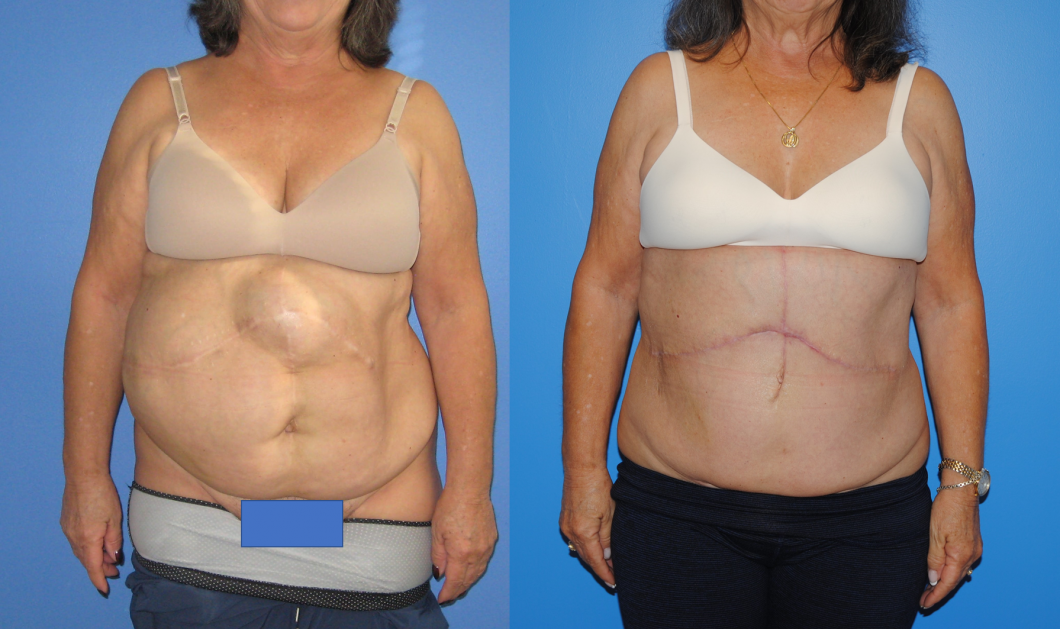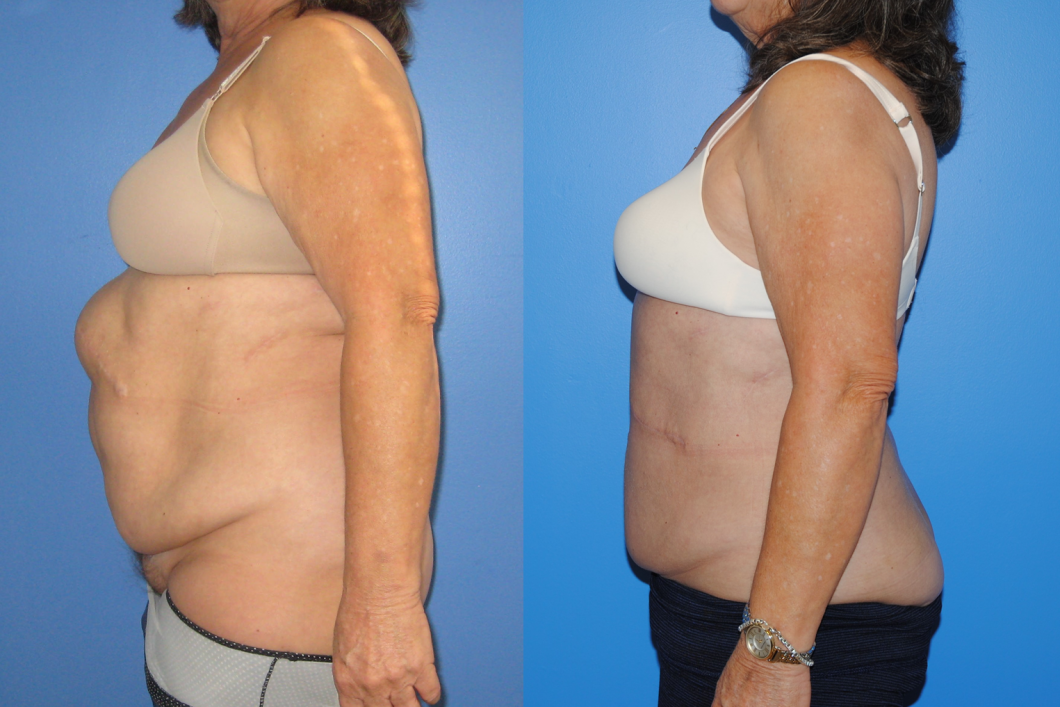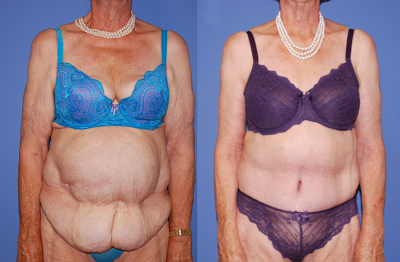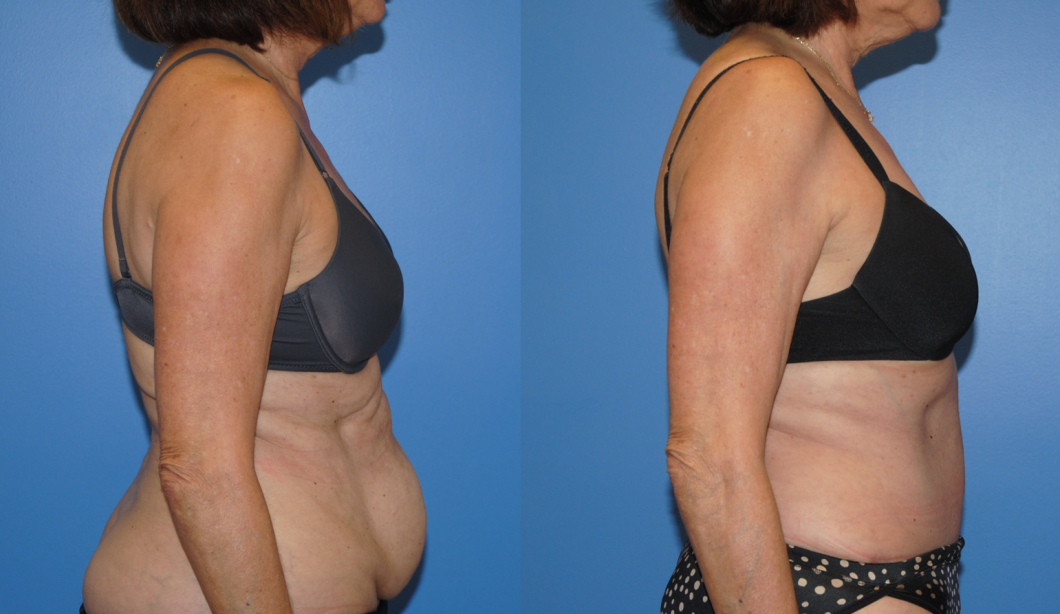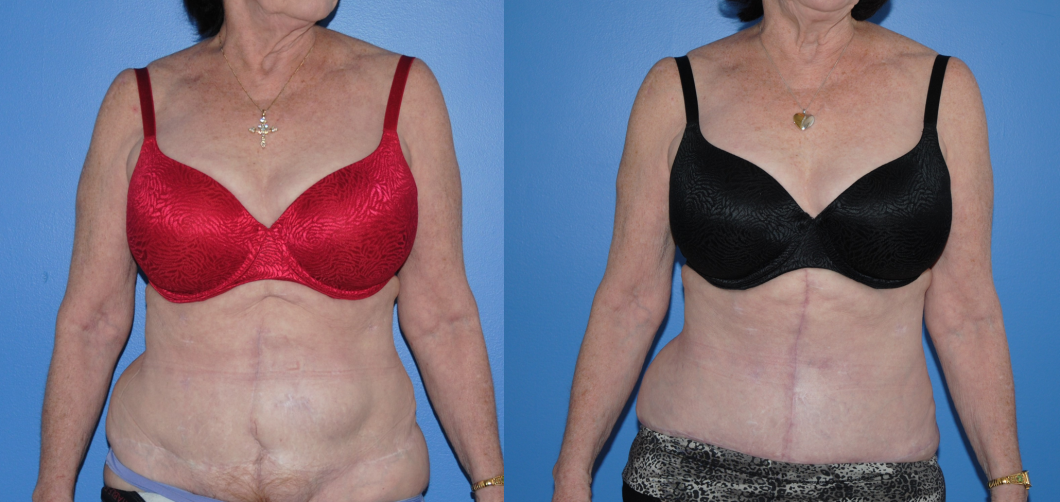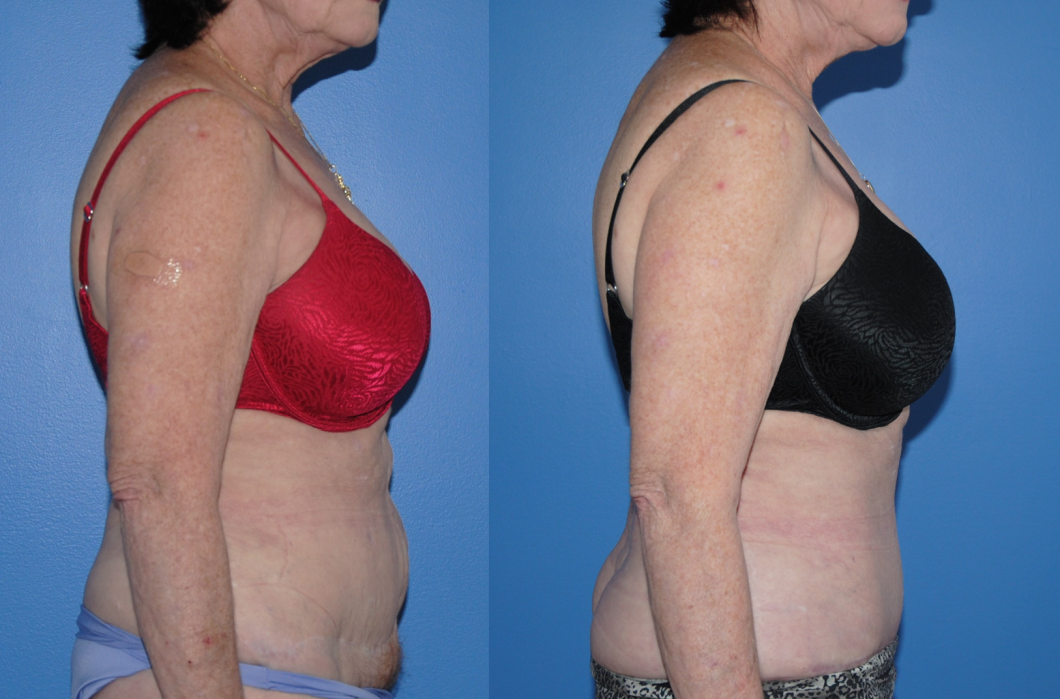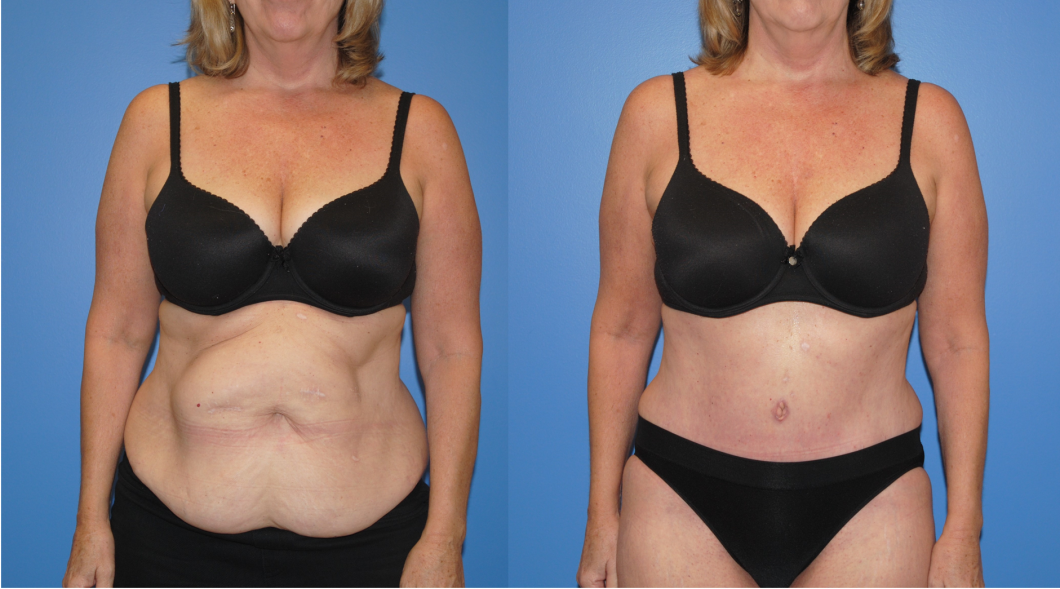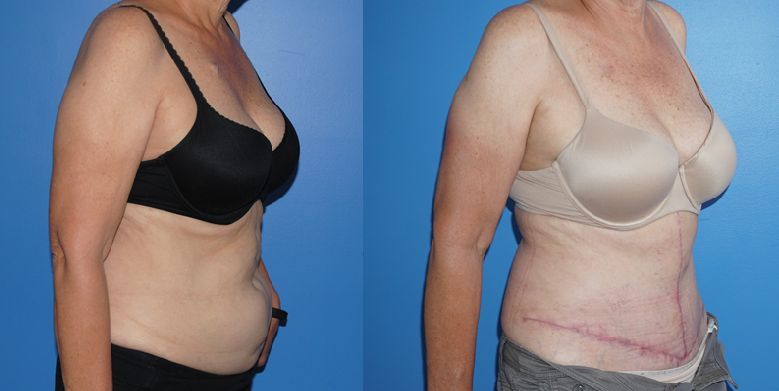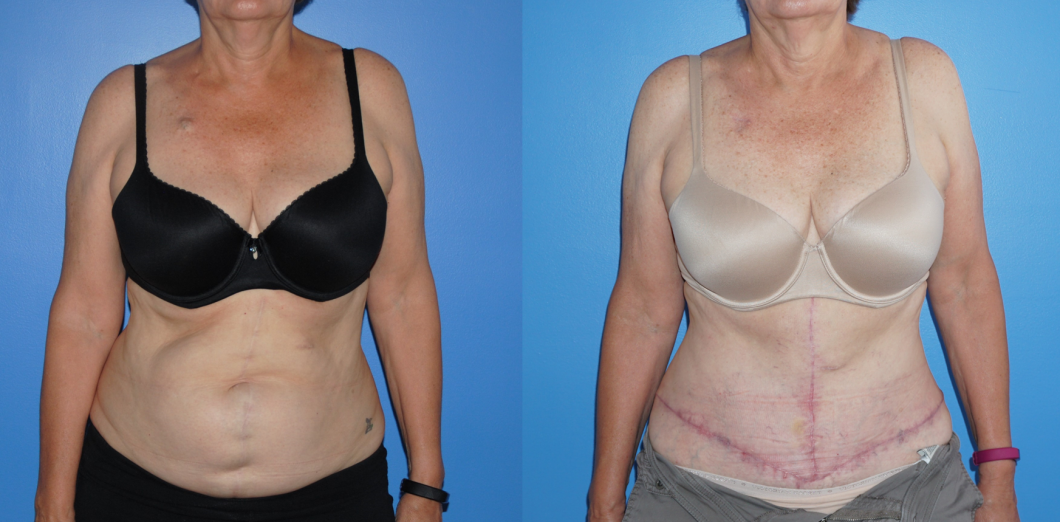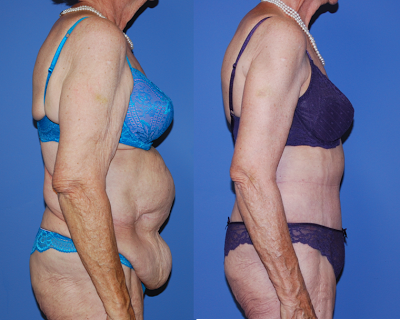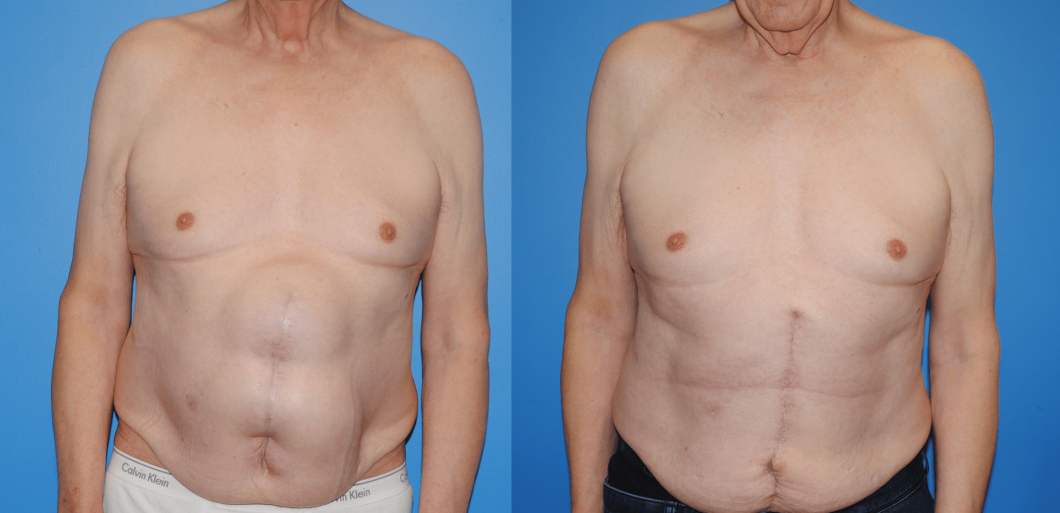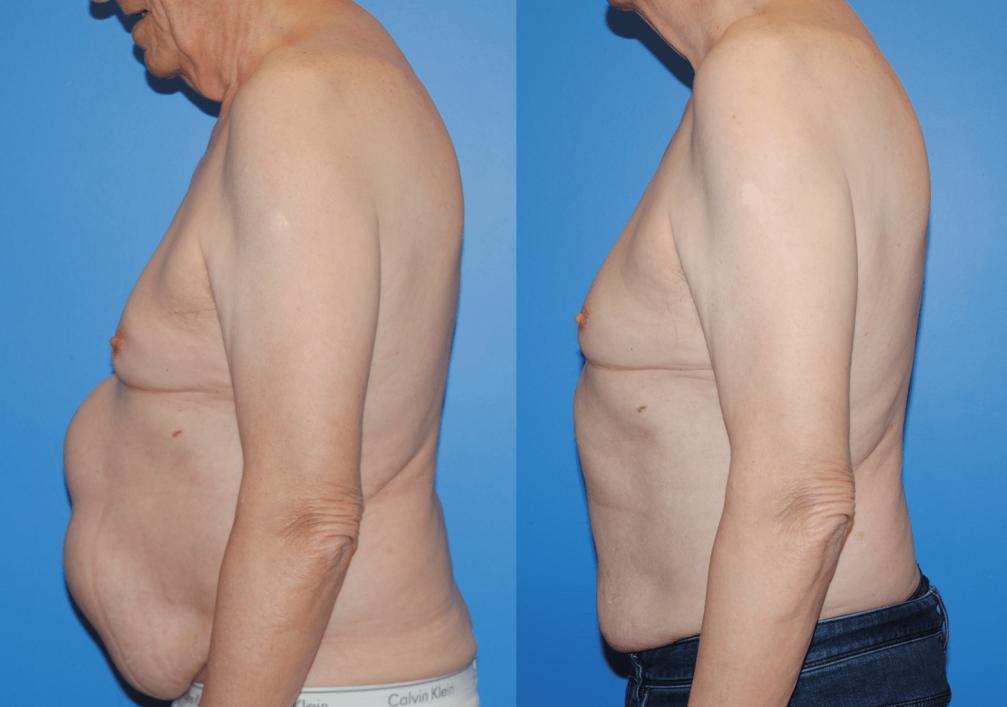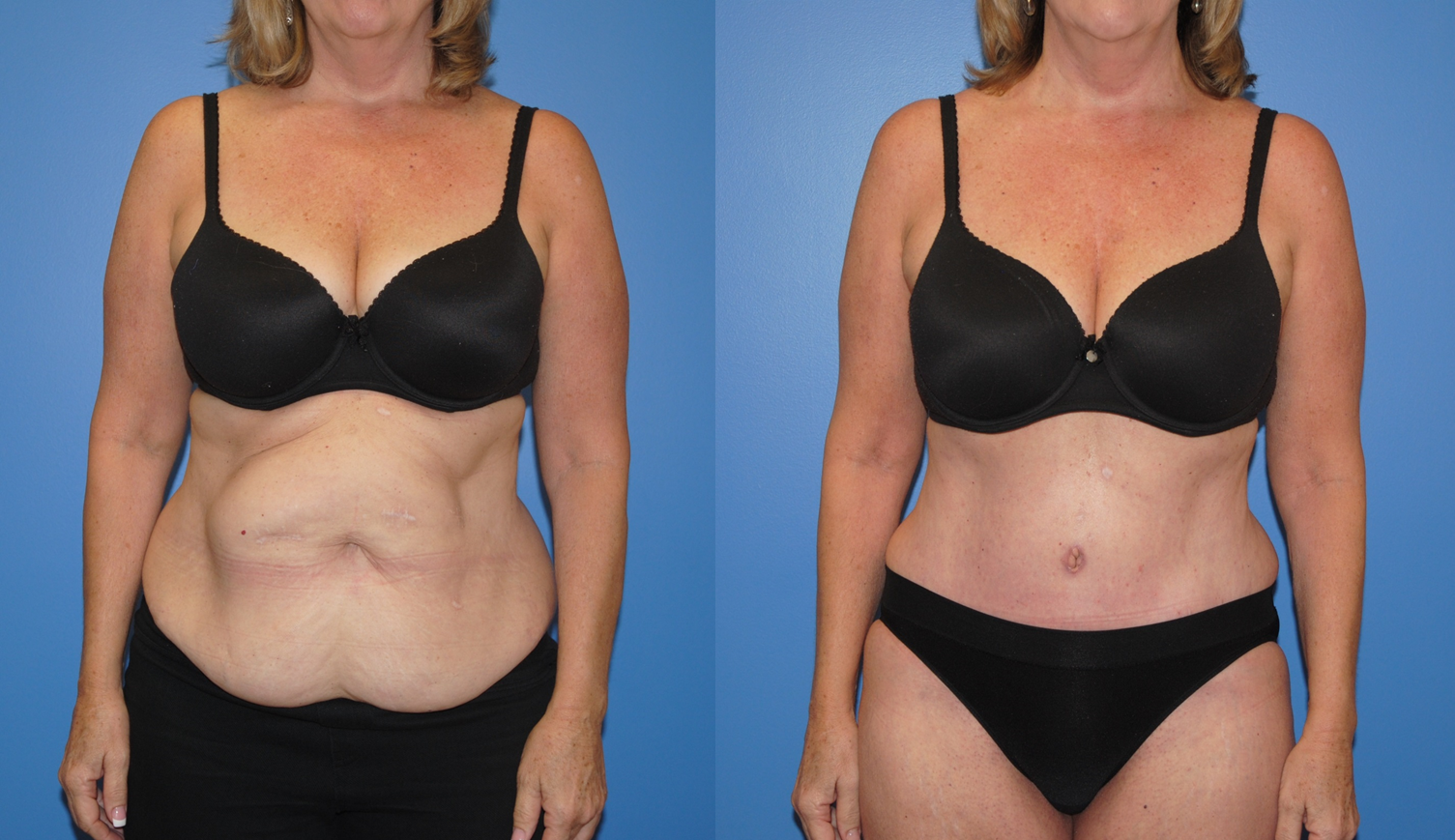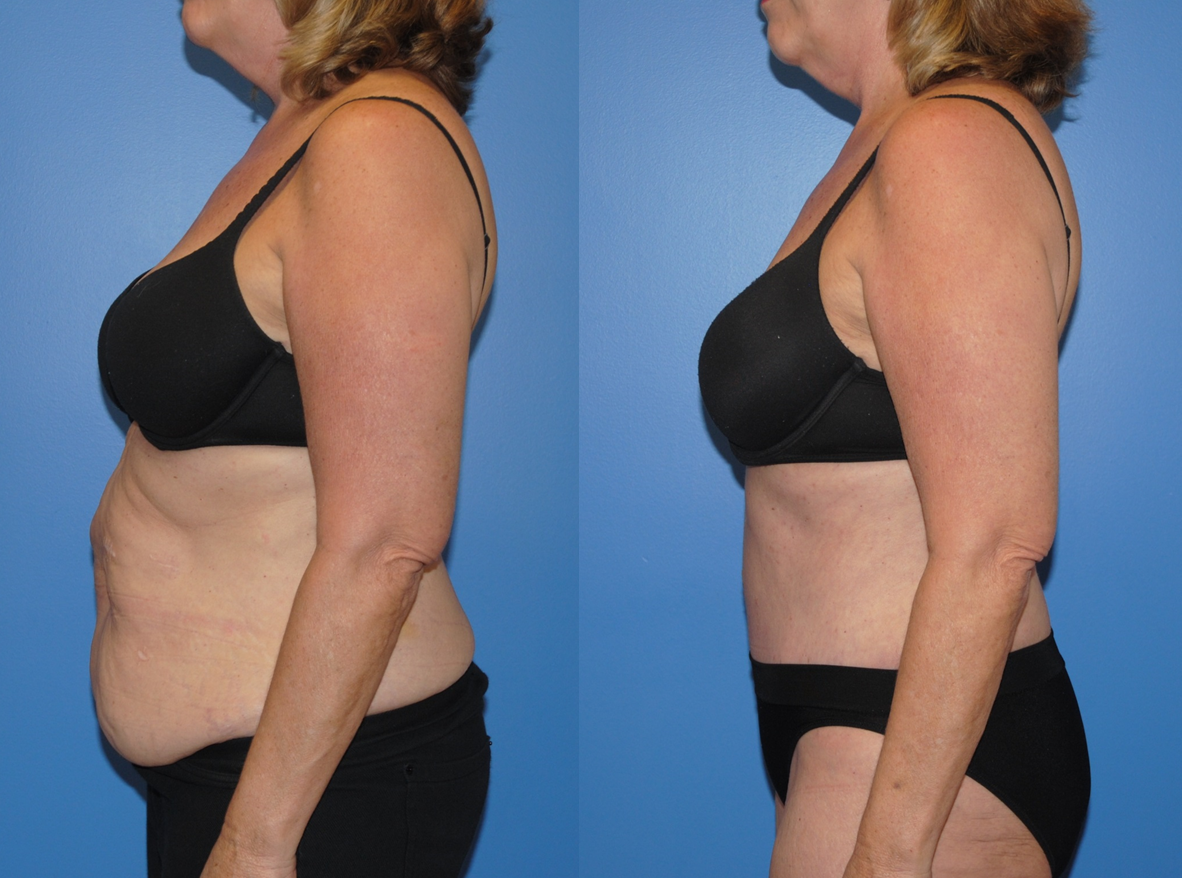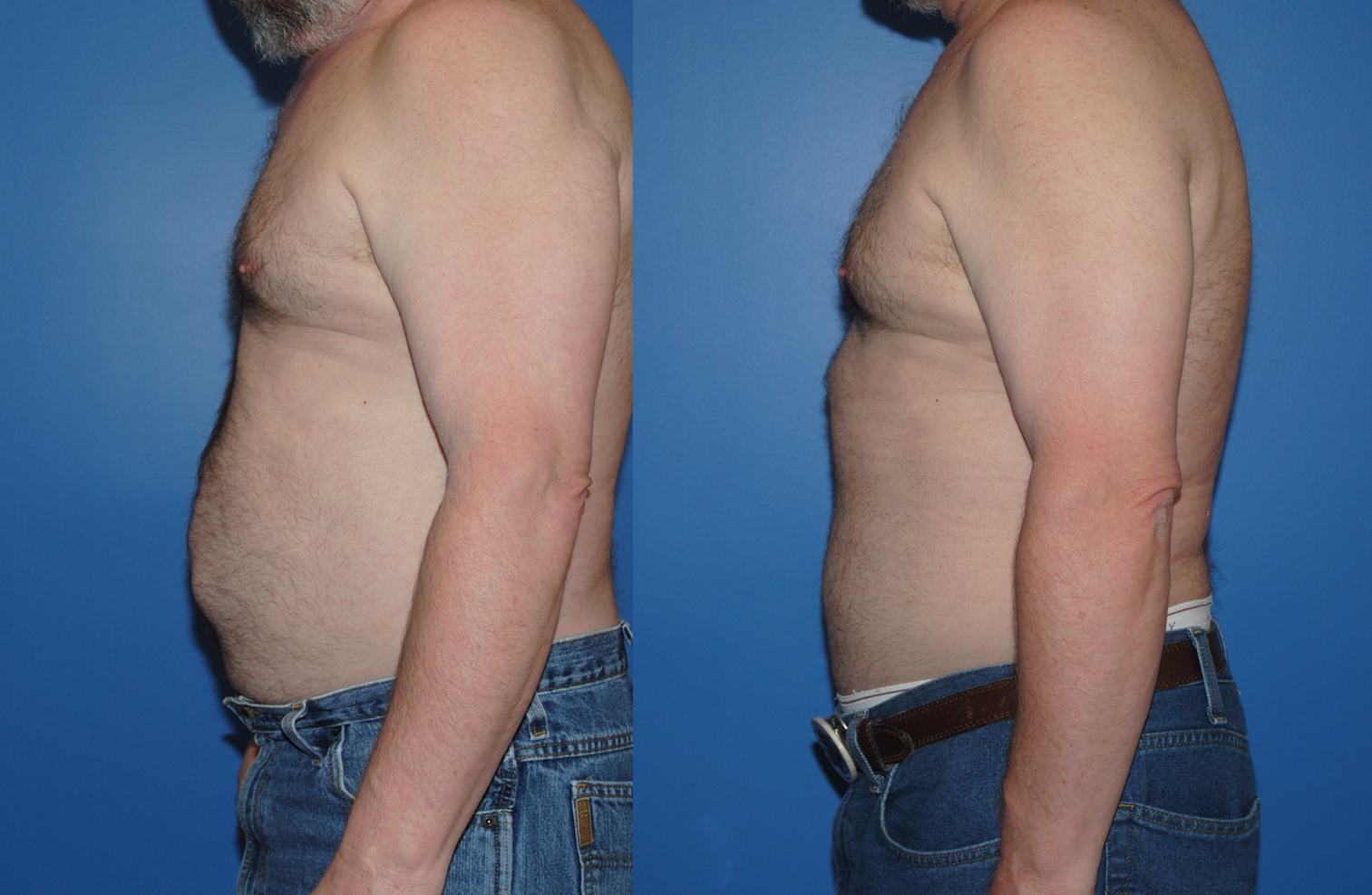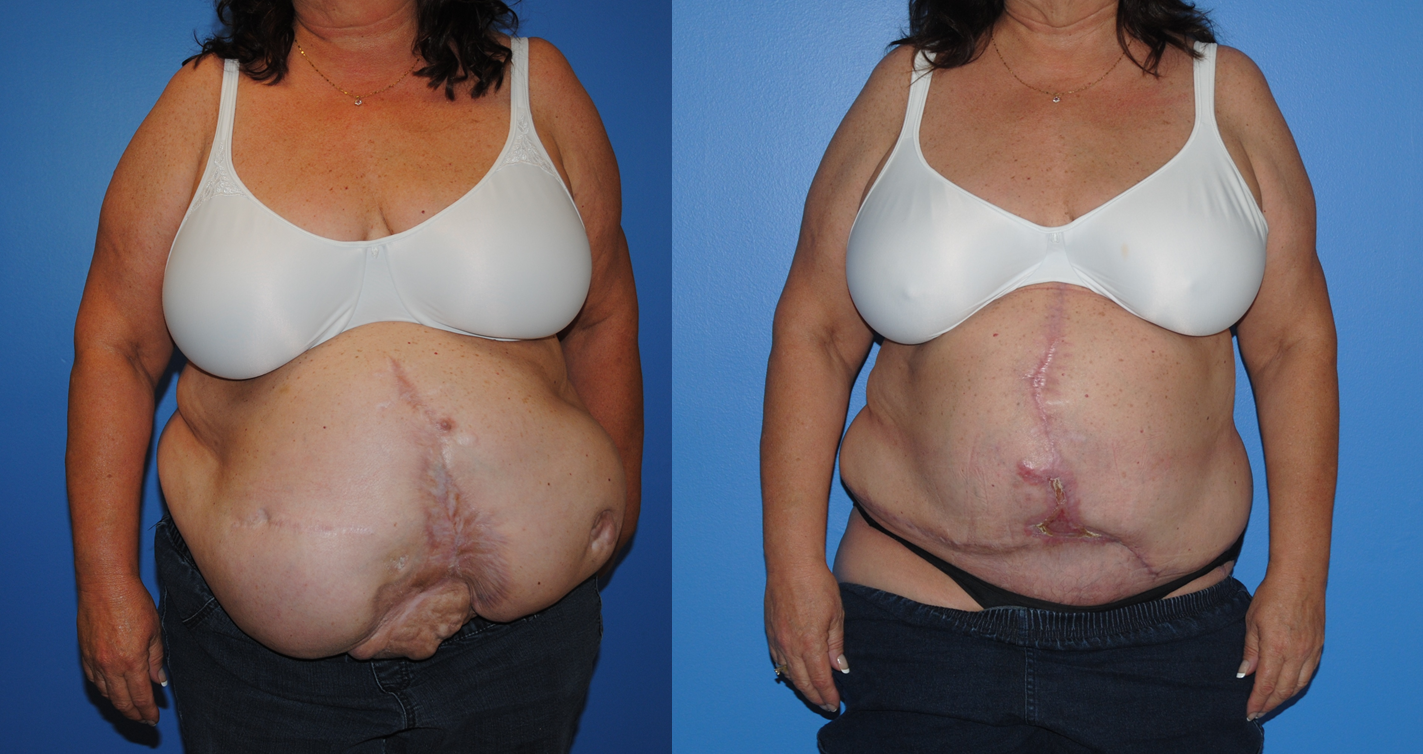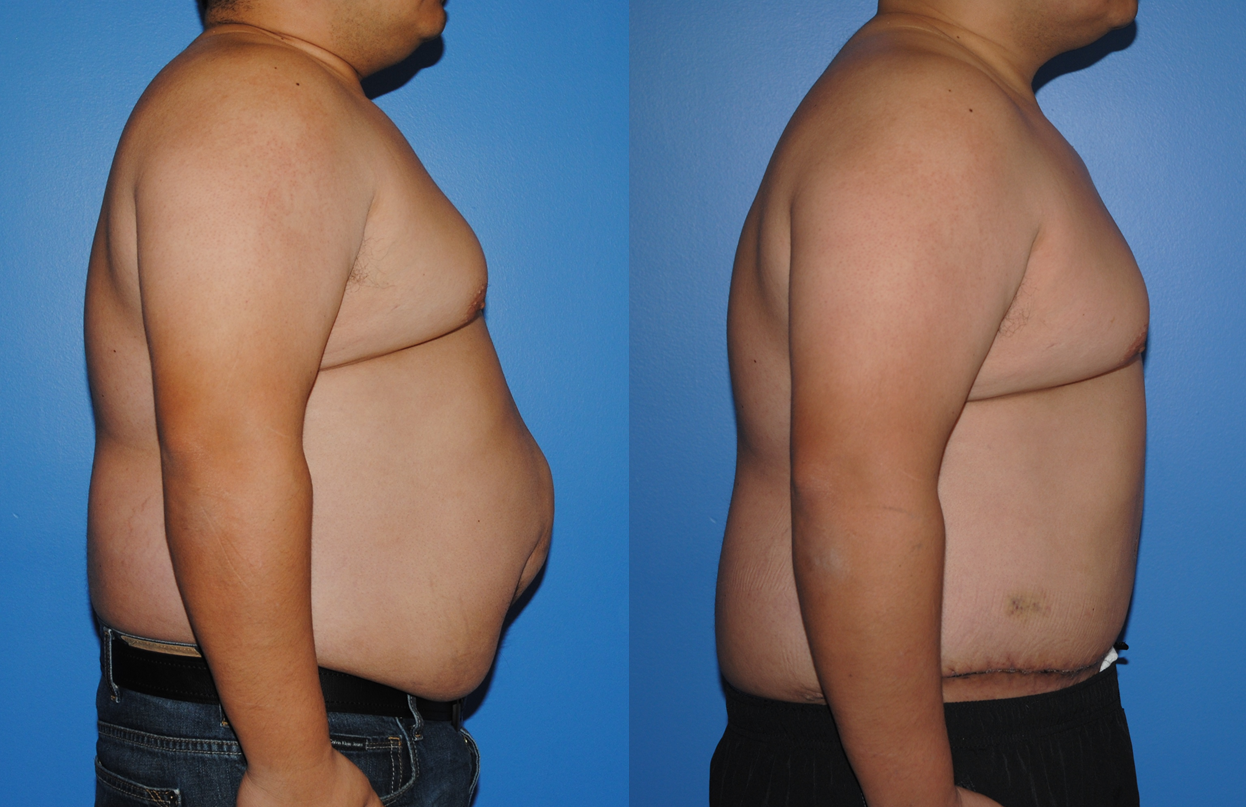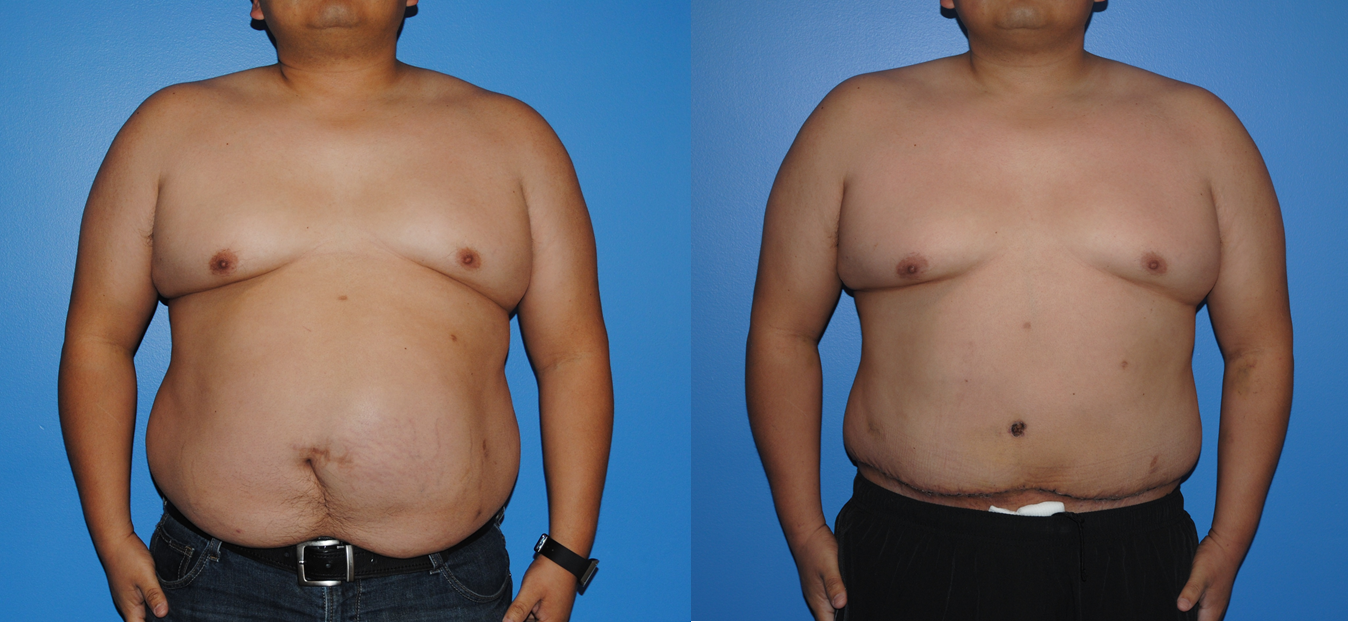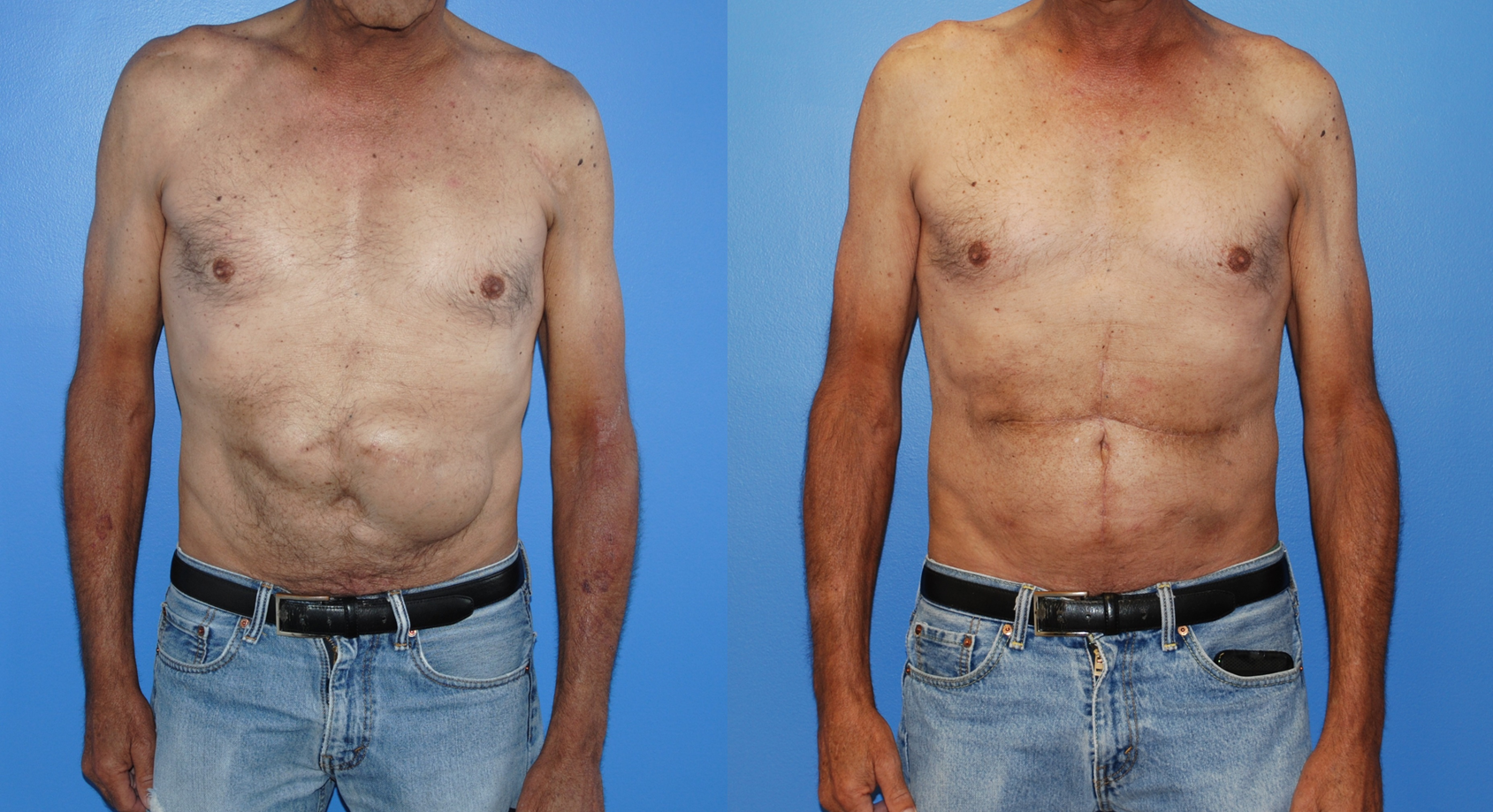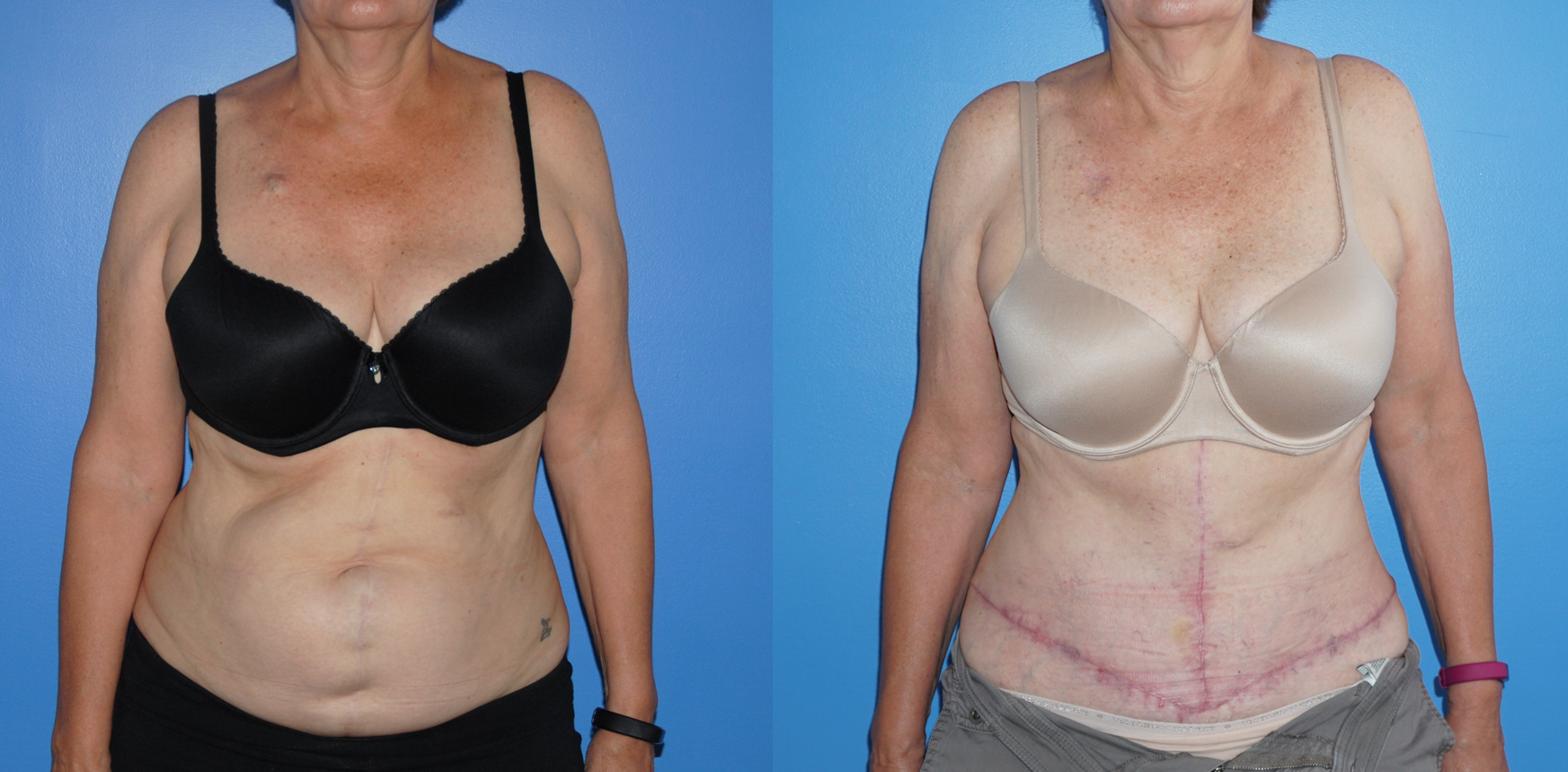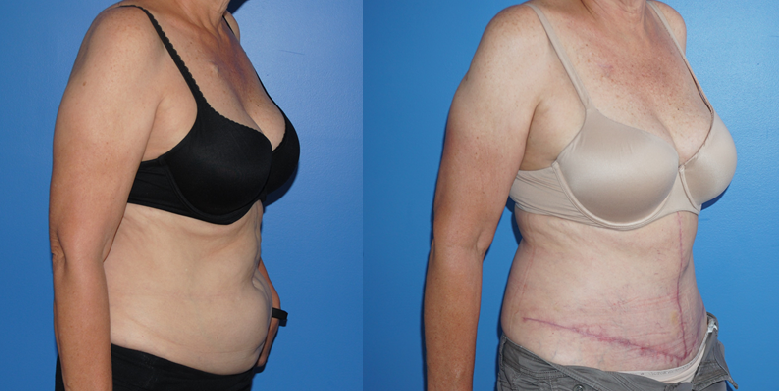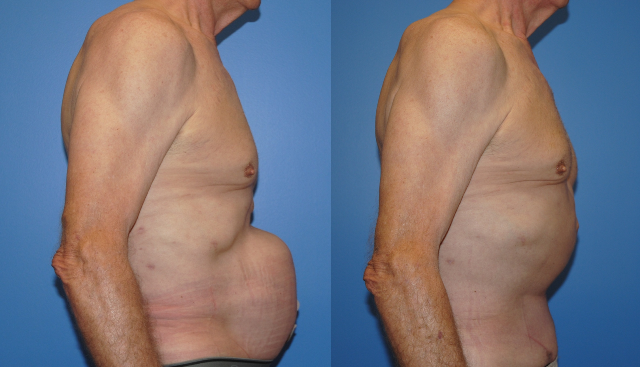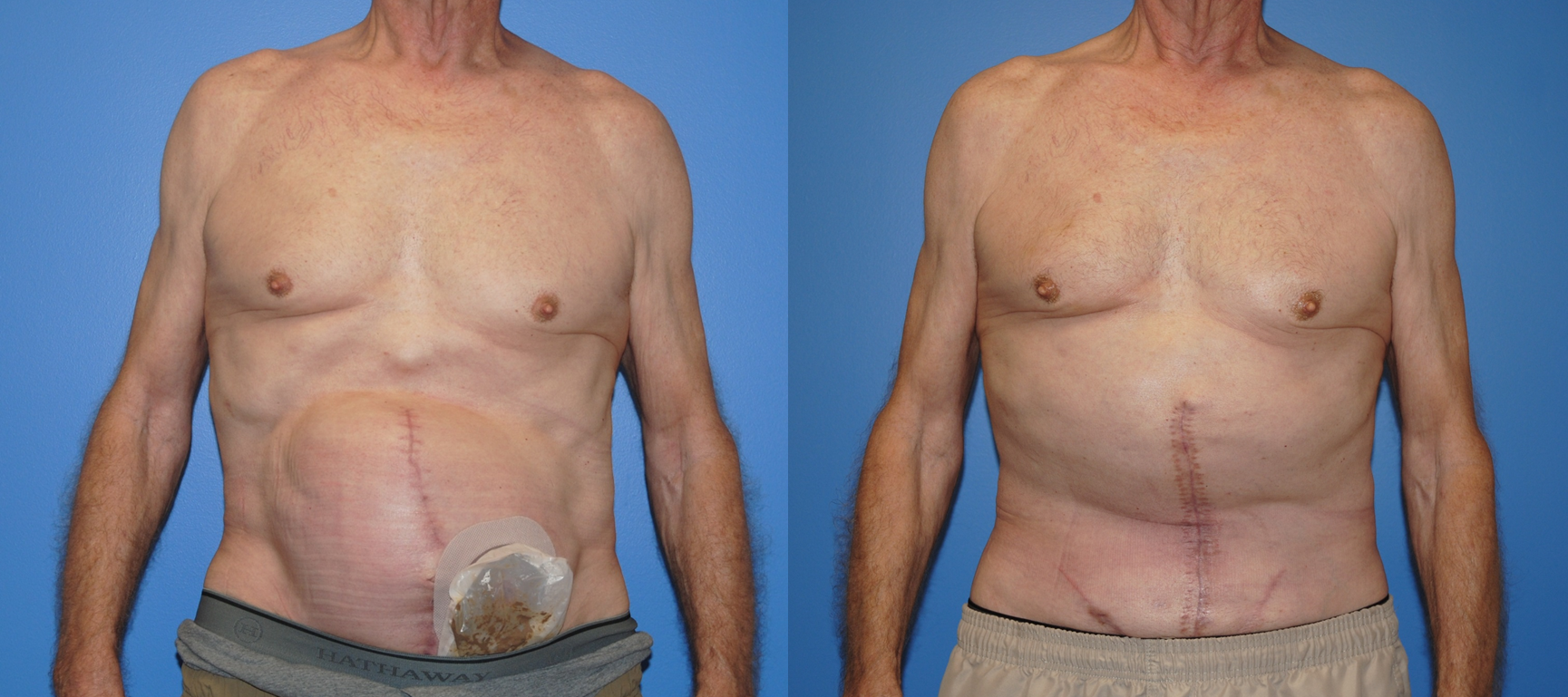Hernia Repair
Board-certified Plastic & Reconstructive Surgeon, Dr. Dickinson, specializes in abdominal wall reconstruction and hernia repair in Newport Beach, CA.
Hernia Repair Surgery
Our practice is often referred patients by other plastic and reconstructive surgeons or general surgeons for hernia repair surgery or to assist with hernia repair surgery. In general, we repair abdominal wall hernias in two broad scenarios. The first is the repair of an umbilical hernia in combination with an abdominoplasty procedure. This procedure takes place in either the surgery center or the hospital where we repair the umbilical hernia at the time of the abdominoplasty procedure.
The other type of hernia that I repair and which I enjoy are large hernias of the abdominal wall that would require component separation or some additional reconstruction or repair of the abdominal wall. Typically, these patients have had complex intraabdominal surgeries or multiple abdominal surgeries or hernia surgeries themselves that have recurred. These abdominal wall reconstructions are often repaired in conjunction with the general surgery team and require a hospital stay. The discussion below applies to these types of abdominal wall reconstructions.
There are several requirements or factors that are helpful for preventing hernia recurrence following surgery. It is important that the patient be as close to their ideal body weight as possible and/or the patient has made a concerted effort to loose weight pre-operatively so that weight control can be continued in the post-operative period. Medical comorbidities such as diabetes, high blood pressure, etc. must be controlled to facilitate recovery, wound healing, and successful repair while reducing potential complications. Protein nutrition is paramount for successful healing and prevention of complications in the post-operative period.
For a more comprehensive understanding of abdominal wall reconstruction and hernia repair, you can click on the following link to read our publication:
Abdominal Wall Reconstruction Paper-Brian P. Dickinson, M.D.
Abdominal Wall Reconstruction/ Hernia Repair Surgery FAQ
There are several questions that we encounter in the hernia repair consultation:
What is a hernia? How did I get? Why did it come back?
A hernia is simply a hole in the abdominal wall. The hole can be something the patient was born with such as an umbilical hernia that becomes larger over time from stretch, during pregnancy, for example. Often the hernias that we repair are incisional hernias that originate from previous surgical incisions. Often the hernia occurs secondary to a high body mass index (BMI) or from medical or surgical comorbidities that prevented the original wound healing. Hernias can recur for several reasons. The most common predictor of hernia recurrence is weight or high BMI. A common predictor of hernia success is how close the normal anatomy of the abdominal wall can be restored and if the restoration can be maintained in an anatomical position. That is, the muscles of the abdominal wall must be reconstructed to restore a dynamic abdominal wall, when possible.
What do I need to do before I have hernia surgery?
Patients often have already had a CT-scan of the abdomen prior to consultation. The CT scan allows the patient and physician to review the abdominal anatomy and determine the size and location of the hernia, and determine what contents are within the hernia. Once the size and location of the hernia are understood, a surgical plan can be created to repair the hernia.
Protein intake must be high prior to surgery. Typically, patients should eat 1-2 grams of protein per kg of body weight. A 70 kg person should eat between 70 and 140 grams of protein per day prior to surgery and for six weeks after surgery. After six weeks this amount can be reduced.
The patient needs to have medical clearance prior to surgery. Depending upon the patients age, lab work, electrocardiogram, and a chest x-ray may be necessary.
What is the recovery like for abdominal wall reconstruction and hernia repair?
There are several phases to recovery following abdominal wall reconstruction. General anesthesia is used for the surgery. The patient does not see anything, hear anything, or feel anything. General anesthesia is necessary to relax the abdominal wall to allow appropriate repair.
Often times the hernias that are repaired, or abdominal walls that are reconstructed, may have previous mesh in place. Often, it takes time to reduce the hernia or remove the previously placed mesh. The intestines may fall asleep for several days after surgery. Typically, we wait until the patient passes gas before we initiate a clear liquid diet.
The patient wears an abdominal binder at all times for six weeks following surgery and can shower after two days. Typically, the patient has drains in the abdomen that are removed after one to two weeks.
For the first few days following surgery the patient’s pain is controlled with a PCA. A button the patient presses for pain control. Once on a clear liquid diet, the intravenous pain medication is converted to oral pain medications.
Once the patient is tolerating a diet and the pain is controlled with oral pain medications the patient is discharged.
Week 1: For the first week after surgery the patient does purposeful walking. They can walk to the bathroom, walk to eat dinner, and walk to check the mail. The patient can do all things that are necessary.
Week 2: The second week after surgery the patient can walk as if they were shopping at the mall.
This level of physical activity is continued for six weeks following surgery.
Week 6-8: Between six and eight weeks after surgery, the patient is sent for physical therapy. Between six and eight weeks, the abdominal binder is removed. The patient begins isometric core strengthening at the six week mark and continues isometric core strengthening before initiating motions with more excursion.
Week 8 an onward: The patient begins unrestricted strength training.
Pain following hernia surgery is variable and very patient dependent. There tends to be two times when patients experience pain following abdominal wall reconstruction or hernia repair surgery. The initial point is in the immediate post-operative period. During this period the patient is hospitalized and typically receives patient-controlled analgesia in addition to Tylenol and/or medication to relieve muscle spasms. Once urine output is adequate and creatinine values are normal, patients are given Toradol intravenously for pain control. This typically occurs three days after surgery. Once the patient’s bowel function resumes with the passing of flatus from below, then the pain medications are converted to oral pain medications. Another option for pain control is a spinal anesthetic to reduce the amount of narcotics immediately post-operatively, which can slow down the bowel.
Patients are discharged home with oral pain pills such as oxycodone and Tylenol. Oral medications are generally taken for a week at home before they are discontinued.
The second round of pain tends to occur at about six to eight weeks following surgery. At this point patients start physical therapy and tend to increase their level of activity. A second round of pain is experienced which is often easily controlled with oral pain medications.
Complications from abdominal wall reconstruction and hernia repair can occur frequently. Often the same medical or surgical comorbidities that influenced the surgery prior to the hernia or had an impact on hernia recurrence tend to still be present. The best options the patient and surgeon have are to control, manage, or minimize the impact of these comorbidities on the abdominal wall reconstruction.
When complications arise following abdominal wall reconstruction and hernia repair surgery it is important for the patient and surgeon to identify them and manage them appropriately. The most common complications are seroma, hematoma, and wound dehiscence.
A seroma is a collection of fluid that occurs beneath the subcutaneous tissue and superficial to the abdominal wall. Seromas occur after drains have been removed and the patient begins physical activity. The occurrence of seromas can be reduced by compliance with the abdominal binder in the post-operative period and keeping protein intake high.
Hematomas are frequently the result of too quickly a return to physical activity or elevated blood pressure. Hematomas are often best treated if surgically drained.
Wound dehiscence is common in patients who have a BMI which is higher than normal. It can also occur when protein intake is low or there are nutritional deficiencies present. Wound dehisences are treated with local wound care or often a return to the operating room to debride and close the wounds.
Dr. Brian Dickinson, Abdominal Wall Reconstruction and Hernia Repair
Another common question Dr. Dickinson hears in consultation is, “How or Why does a Plastic Surgeon get involved with hernia repair surgery?”
Dr. Dickinson enjoys abdominal wall reconstruction. The satisfaction gained from repairing a complex abdominal wall hernia is great. Hernias not only cause pain, they can limit exercise, and have an overall negative effect on a patients psyche and outlook. Restoring a normal contour to the abdominal wall that is functional can have a favorable physical and psychological impact on a patient. The rewards the patient experiences are so positive and frequently unquantifiable.
Often, the flap surgery that Dr. Dickinson performs for breast reconstruction or gynecologic reconstruction involves muscles of the abdominal wall. Dr. Dickinson has found that the familiarity with these abdominal wall-based flaps has helped in the understanding of abdominal wall reconstruction and hernia repair.
Dr. Dickinson graduated from Mount Sinai School of Medicine/New York University in New York City where he was inducted into the Alpha Omega Alpha honor society. Dr. Dickinson continued his medical training at the University of California Los Angeles’ Medical Center in both General Surgery and Plastic Surgery.
Dr. Dickinson is Board Certified in Plastic & Reconstructive Surgery by the American Board of Plastic Surgery. He is also a member of the the American Society of Plastic Surgeons.

